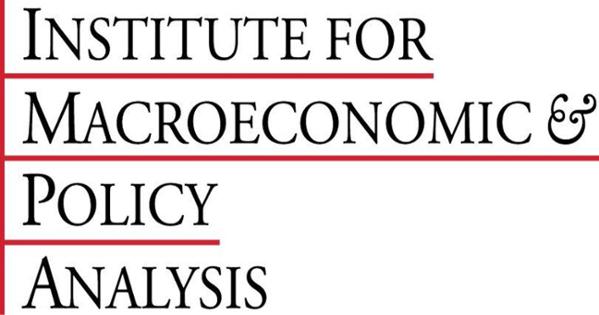New Report: The Top Marginal Income Tax Rate Drives Government Revenue and Inequality, but Not Growth

As tax season concludes and President Trump expresses openness to raising taxes on the highest earners, a new report from American University’s Institute for Macroeconomic and Policy Analysis (IMPA) finds that economic growth is not much affected by the top marginal income tax rate, as is often presumed, while the top rate is a significant driver of government revenue and inequality. Keeping the TCJA’s tax cut for high earners would sacrifice significant revenue while providing no macroeconomic benefits and increasing income inequality. In contrast, modestly raising the top marginal tax rate would raise revenue and decrease inequality without stifling growth.
The report finds that:
Making the TCJA’s the top marginal rate of 37% permanent, instead of allowing the top rate to revert to 39.6% as current law requires, would reduce annual federal revenue by approximately 2.24 percent after 10 years, but would not boost growth.
Maintaining the TCJA’s cut would increase the share of national income going to the richest 1% by approximately 1.3 percent while shrinking the income share of the bottom 50% by 0.5 percent.
If Congress were to increase the top marginal tax rate to 44%, it would yield annual revenue gains of about 3.1 percent with no discernible costs in terms of GDP, private investment, or wages.
“There is no compelling empirical evidence that lowering effective tax rates on the wealthy leads to meaningful increases in real economic activity – whether in the form of productive investment or high wages for workers,” said Ignacio Gonzalez, assistant professor of economics and co-director of IMPA. “It is therefore striking that these arguments continue to be invoked in support of large tax cuts for the rich, especially at a time when public revenues are urgently needed and it is widely understood that declining tax contributions from high-income individuals are a key driver of the U.S. fiscal deficit.”
Congress is soon expected to start negotiating the extension of key provisions of the 2017 Tax Cuts and Jobs Act (TCJA). Among its many provisions, the TCJA lowered most marginal tax rates on individual income and altered the income thresholds for high-income tax brackets. Specifically, the TCJA decreased the top marginal tax rate from 39.6% to 37% and raised the bracket threshold for married joint filers from $470,700 to $600,000.
American University’s Institute for Macroeconomic and Policy Analysis (IMPA) informs policy and legislative proposals with research on macroeconomics, public finance and inequality. In their work, IMPA researchers apply new economic models and methods that improve upon conventional ones to include the effects of the market power of large corporations in America. IMPA resides in the Department of Economics in AU’s College of Arts and Sciences.